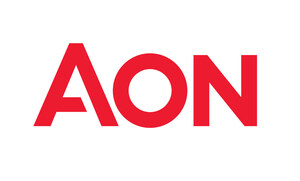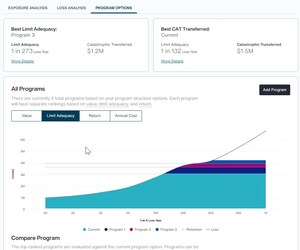CHICAGO, July 19, 2017 /PRNewswire/ -- Impact Forecasting, Aon Benfield's catastrophe model development team, today launches its Global Catastrophe Recap: First Half of 2017 report, which evaluates the impact of the natural disaster events that occurred worldwide in the first six months of the year. Aon Benfield is the global reinsurance intermediary and capital advisor of Aon plc (NYSE:AON).
The report reveals that global economic losses from natural disasters for 1H 2017 were estimated at USD53 billion – 56 percent lower than the 10-year average of USD122 billion and 39 percent lower than the 17-year average of USD87 billion. Meanwhile, insured losses were preliminarily estimated at USD22 billion – 35 percent lower than the 10-year average of USD34 billion, and 12 percent lower than the 17-year average of USD25 billion.
According to the report, the severe convective storm (SCS) peril was the costliest disaster type on an economic basis (nearly USD26 billion) during the period under review, comprising 48 percent of the loss total, with the majority of the loss (USD23 billion) attributable to events in the United States. SCS also caused the majority of insurance losses (USD17+ billion), comprising 78 percent of the loss total and with nearly USD16 billion attributable to widespread hail, damaging straight-line winds, and tornadoes in the U.S.
Natural disasters claimed at least 2,782 lives during 1H 2017, the lowest figure since 1986 and significantly below the long-term (1980-2016) average of 40,867. Flooding was the deadliest peril during the period, being responsible for at least 1,806 deaths.
Steve Bowen, Impact Forecasting director and meteorologist, said: "The financial toll from natural catastrophe events during the first six months of 2017 may not have been historic, but it was enough to lead to challenges for governments and the insurance industry around the world. This was especially true in the United States after the insurance industry faced its second-costliest first half on record following a relentless six months of hail-driven severe weather damage. In fact, nearly eight out of ten monetary insurance payouts for global disasters were related to the severe convective storm peril. Other events – such as Cyclone Debbie in Australia, flooding in China and Peru, wildfires in South Africa, and a series of windstorms in Europe – led to notable economic damage costs. As we enter the second half of the year, much of the focus will be on whether an El Niño officially develops. Such an event could have a prominent influence on weather patterns and associated disaster risks."
The report highlights that the U.S. recorded 76 percent of the global losses sustained by public and private insurance entities during 1H 2017, while EMEA (Europe, Middle East & Africa) and Asia-Pacific (APAC) each accounted for 10 percent. The Americas made up four percent of the global insured loss total.
Around 42 percent of the 1H 2017 global economic losses were covered by insurance, above both the near- and medium-term average of 32 percent and due to the fact that the majority of losses occurred in the U.S. However, insurance take-up rates continued to grow in other areas, notably Asia-Pacific (APAC) and the Americas.
To view the full Global Catastrophe Recap: First Half of 2017 report, please follow the link:
Along with the report, users can access current and historical natural catastrophe data and event analysis on Impact Forecasting's Catastrophe Insight website, which is updated bi-monthly as new data become available:
www.aonbenfield.com/catastropheinsight
Further information
For further information please contact the Aon Benfield PR team: Andrew Wragg (+44 207 522 8183 / 07595 217168) David Bogg or Alexandra Lewis
Follow Aon on Twitter: https://twitter.com/Aon_plc
For information on Aon plc. and to sign-up for news alerts: http://aon.mediaroom.com
SOURCE Aon plc
Related Links
WANT YOUR COMPANY'S NEWS FEATURED ON PRNEWSWIRE.COM?
Newsrooms &
Influencers
Digital Media
Outlets
Journalists
Opted In






Share this article